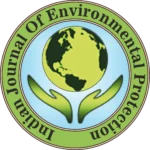IJEP 44(13): 1231-1237 : Vol. 44 Issue. 13 (Conference 2024)
Priti Sharma* and Rupa Khanna Malhotra
Graphic Era (deemed to be University), Department of Commerce, Dehradun – 248 002, Uttarakhand, India
Abstract
The magnificent Indian Himalayas stretch across 13 Indian states and union territories, namely Jammu and Kashmir, Ladakh, Uttarakhand, Himachal Pradesh, Arunachal Pradesh, Manipur, Meghalaya, Mizoram, Nagaland, Sikkim, Tripura, Assam and West Bengal. This awe-inspiring region spans an impressive 2,500 km and is home to approximately 50 million people, each with its own unique characteristics and contributing to the region’s economic, environmental, social and political landscapes. Within this diverse ensemble, each state possesses its own distinct cultural identity, thriving alongside a flourishing social and economic backdrop. While agriculture plays a pivotal role in the Himalayas’ economy, sectors, like trade, tourism and forestry also contribute significantly to the region’s prosperity. The Western Himalayas boast highly productive arable lands, yielding various grains, such as rice, corn and wheat. Moreover, the region is known for its fertile lands, producing ample crops of corn, wheat, potatoes and sugarcane. However, there are challenges that hinder sustainable development in Uttarakhand, such as the impact of human activities on the environment, the need for rural women’s education and the struggles faced by impoverished farmers. Proper management of tourism, shared resource utilization and addressing issues, like pollution, overpopulation and deforestation are crucial to preserve the region’s air quality, soil condition and overall land health. For rural women to progress, it is also essential to address their low levels of education, health consciousness and self-sufficiency. Poverty-stricken rural farmers also need improved access to modern practises and water for irrigation. Sustainable tourism plays a pivotal role in reducing poverty, preserving the environment and safeguarding cultural heritage. Various factors, including socioeconomic, biophysical and external factors influence the successful implementation of common resource management in Uttarakhand. Given the development challenges confronting hilly areas, as well as the need for industrialization in the state for the growth and development of other sectors, the current study aims to demonstrate the profound impact of industrialization on sustainable development in the state of Uttarakhand.
Keywords
Indian Himalayas, Uttarakhand, Sustainable development, Sustainable tourism and Industrialization
References
- Uttarakhand Biodiversity Board. Biodiversity profile of Uttarakhand. Available at: sbb.uk.gov.in.
- Singh, A., M. Rawat and Semwal. 2023. Unveiling the Himalayan nexus : Unraveling antipogenic triggers and pusuing sustainable development in Uttarakhand . J. Mountain Res. DOI:10.51220/jmr.v18i 1.11.
- 08067046209.2023. Landuse land cover changes and climate change impact on the water resources : A study of Uttarakhand state. Adv. Geographical Env. Sci., 1-16.DOI:10.1007/978-981-99-2605-3-1.
- Preeti, K. Rama and C. Joshi. 2023. The impact of sustainable supply chain practices on the environmental performance of SMEs in Himalayan region : Evidence from Uttarakhand. J. Mountain Res., DOI:10.51220/jmr.v18i1.38.
- Bhalla, H.D.S. 2015. Analysis of industrial waste for energy generation with reference to Uttarakhand, India : Where as a potential with reference to Uttarakhand, India : Where as a potential energy weapon. International Conference on Technologies for sustainable developmet (ICTSD). Proceedings, pp 1-6.
- Ahmed, N. and G.P.G.C. Rajouri. 2013. Sustainable tourism development in Uttarakhand region of India. Int. J. Manage. Social Sci. Res., 2 (4):106-111.
- Chandra, P. and J. Kumar. 2021. Strategies for developing tourism business in the Indian Himalayan region : Insights from Uttarakhand, the northenrn Himalayan state of India. J. Destination Marketing Manage., 19:100646.
- Li, Y., R. Sinha and Sutirtha. 2020. The employment effect of place-based policies : Evidence from India. Policy Research working paper no. 9477. World Bank, Washington, D.C.
- Awasthi, I. and B.S. Mehta. 2020. Forced out-migration from hill regions and return migration during the pandemic : Evidence from Uttarakhand. The Indian J. Labour Eco., 63:1107-1124.
- Kala, D. and S.C. Bagri. 2018. Barriers to local community participation in tourism development : Evidence from mountanous state Uttarakhand, India. Tourism Int. Interdisciplinary J., 66(3): 318-333.
- Kolhe, P. 2017. Tax incentive policy for development of Himalayan and north-eastern states of India. Indian J. Public Administration. 63(1):136-156.
- Niti Aayog report. 2023.
- Uttarakhand Human Development report. Department of Planning, Uttarakhand.
- https://niti.gov.in/planning commission.gov.in/docs/reports/reports/sereport/ser/ser_pack 0511.pdf.
- https://des.uk.gov.in/files/Uttarakhand_Socio-Economic_Mirror-1-Min.pdf.
- www.investuttarakhand.com
- Elaheh, Kowsari. 2003. Investigation of organic corbon contamination in Himalayan rivers of Uttarakhand. DOI:10.1007/978-981-19-7506-6-8.
- Kazuo, T. 2014. Industrialization and the development of regional economic in the state of Uttarakhand. J. Urban Regional Studies Contemporary India. 1(2):9-20.
- Malik, M.J. 2014. Implication of industrial policies in Uttarakhand case study : Lie Pantnagar. Thesis. School of Planning and Architecture, New Delhi.
- Mittal, S., G. Tripathi and D. Sethi. 2008. Development strategy for the hill districts of Uttarakhand. Working paper no. 217. Indian council for Research on International Economic Relations.
- Economic Survey report Uttarakhand. 2023.
- www.nird.org.in.
- www.ibef.org/uttarakhand.
- Hindustan Times. Available at : www.hindustan. times/Dehradun/18 years since formation, hill-centric development remains a dream for Uttarakhand.
- https://sbb.uk.gov.in/pages.display/93-about-Uttarakhand.
